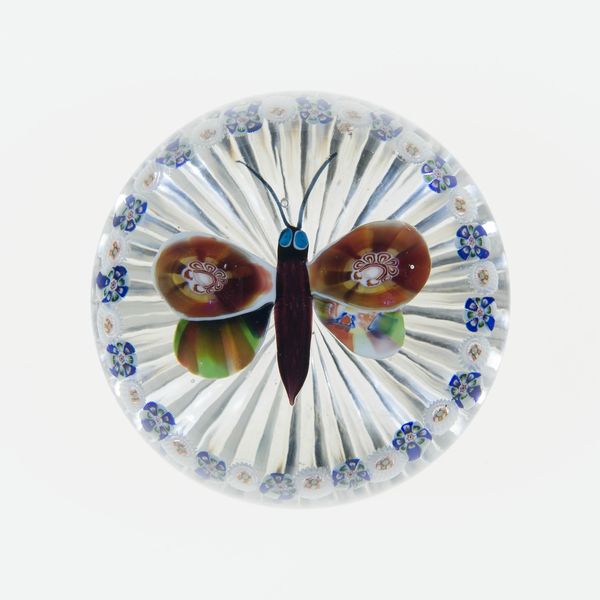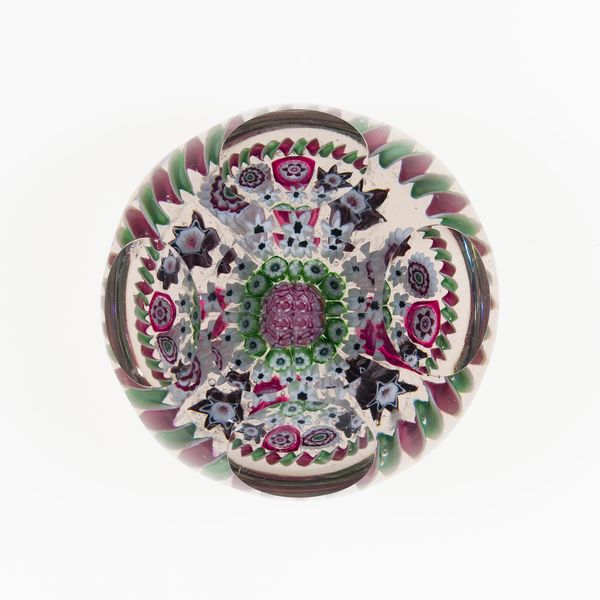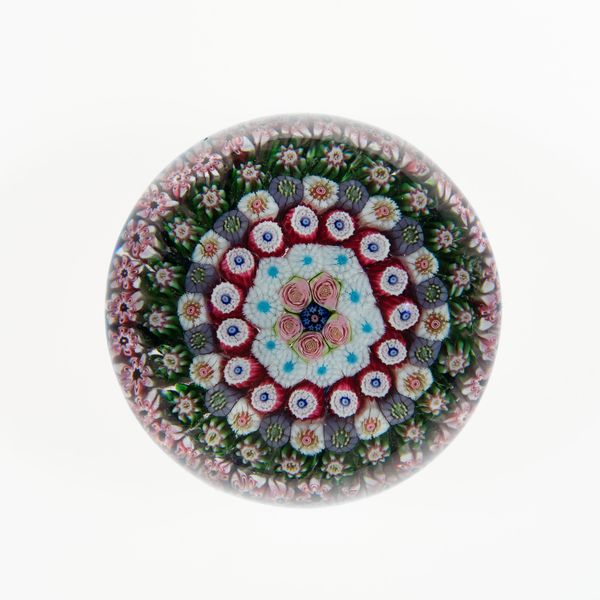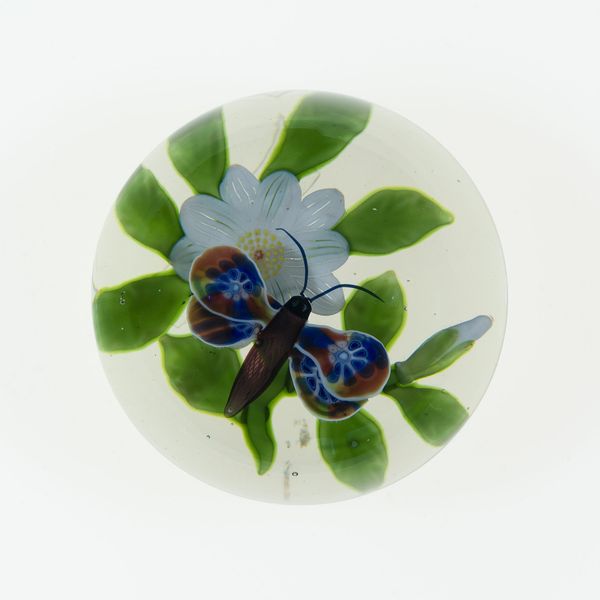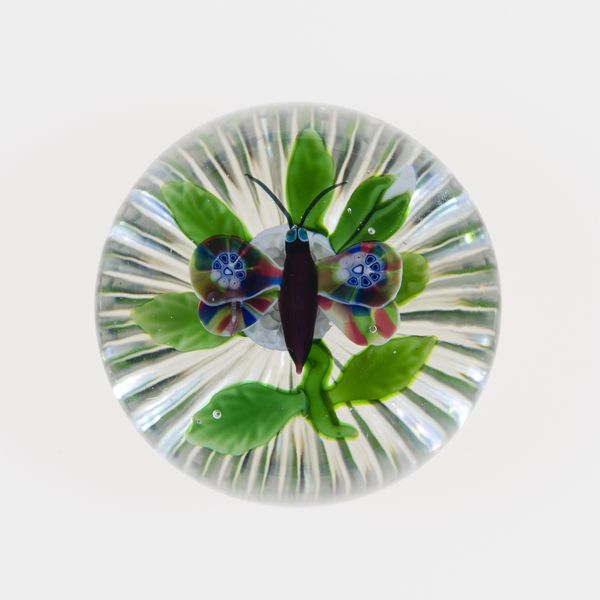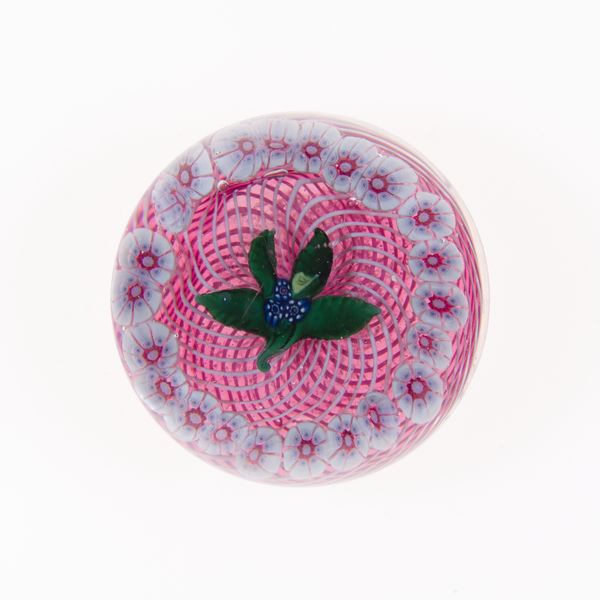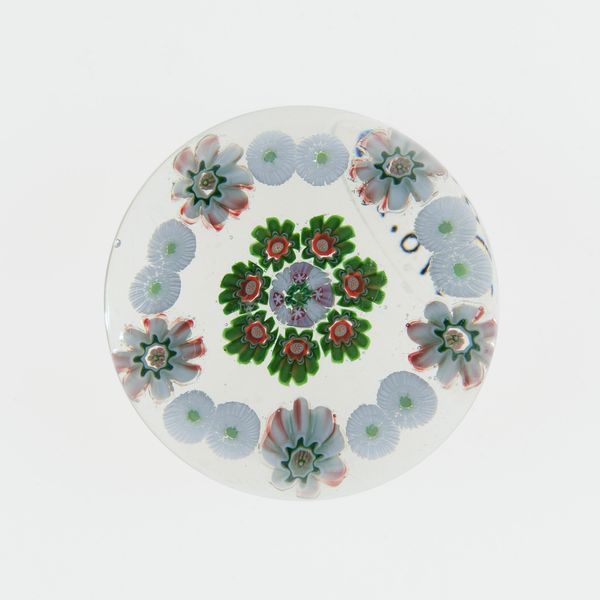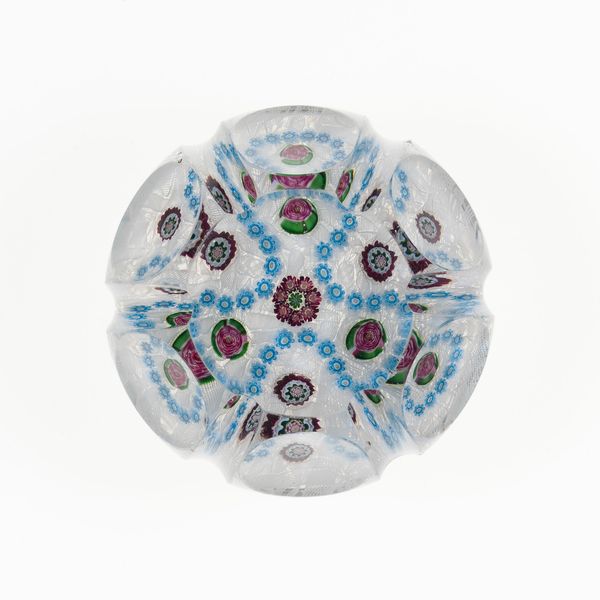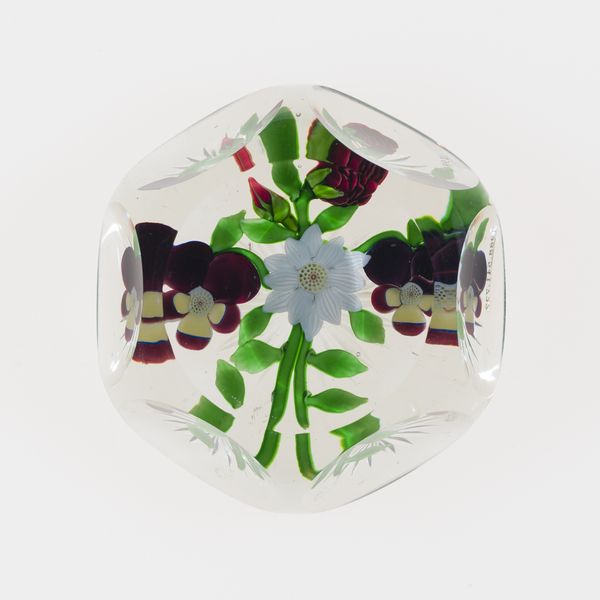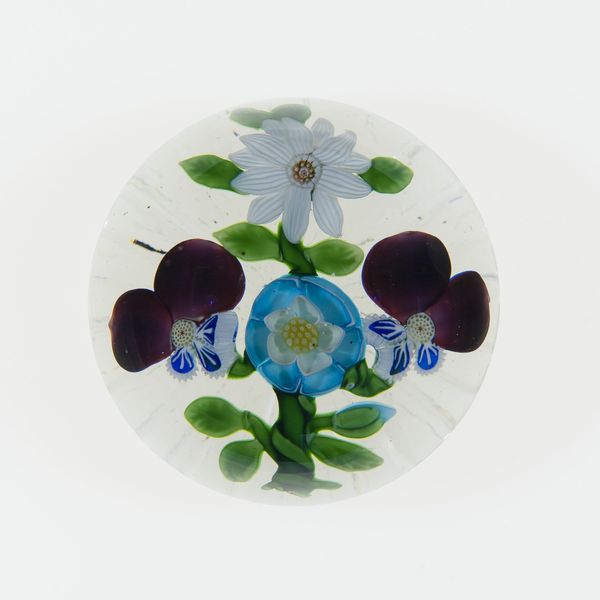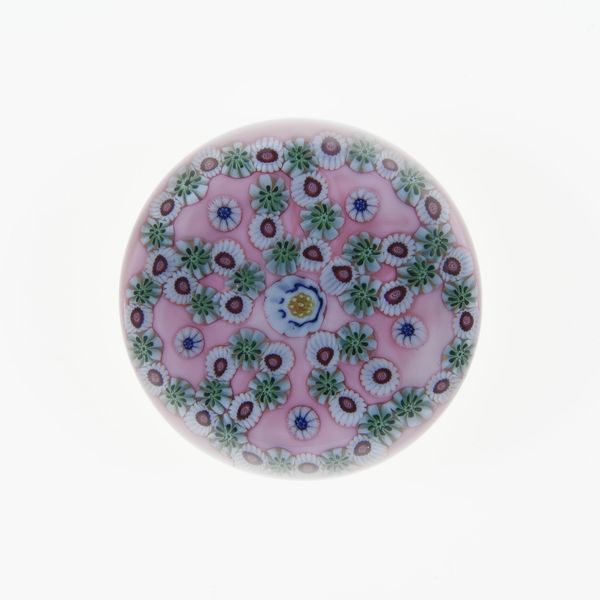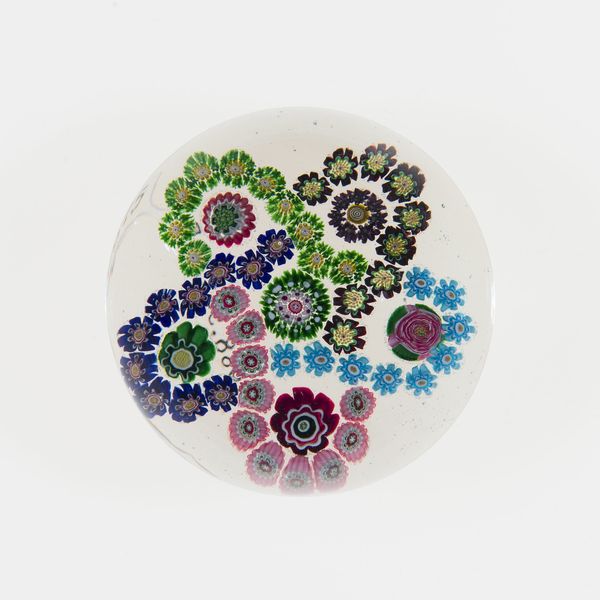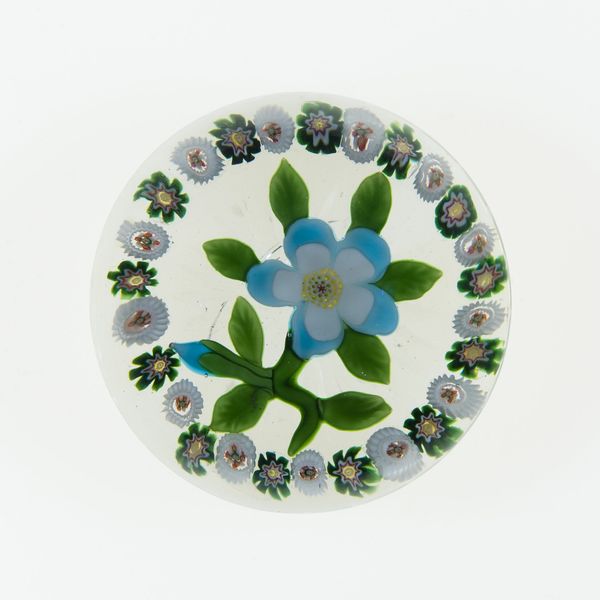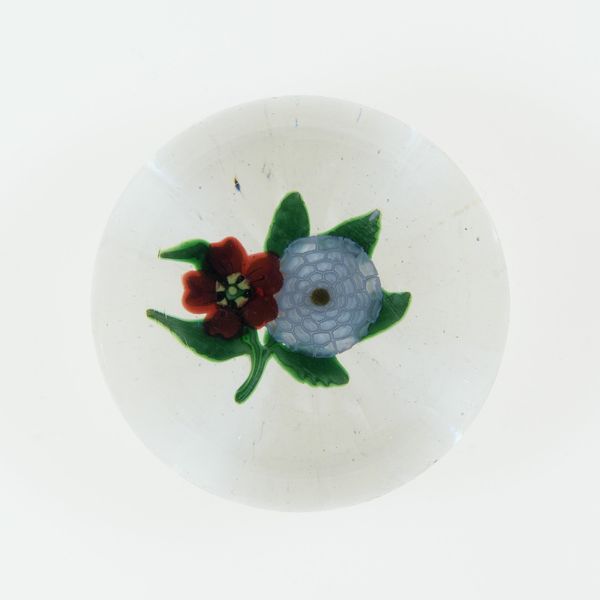
Dimensions: Diam. 7.6 cm (3 in.)
Copyright: Public Domain
Editor: Here we have a glass paperweight made around the 1840s by Baccarat Glassworks, currently residing at The Art Institute of Chicago. It's incredibly detailed and gives off a sense of contained beauty, like a moment frozen in time. What strikes you most about this piece? Curator: For me, it's the way this paperweight highlights the complex process of glassmaking itself. Think about the labor involved in creating something so intricate. It's not just about aesthetic appeal; it's about the control and manipulation of materials under intense conditions. Editor: I see what you mean. The level of detail does speak to the artist's skill. The little flowers around the butterfly almost look like they were individually placed. Curator: Precisely. Consider the socio-economic context. Who was consuming these objects? These weren't mass-produced trinkets but luxury items, indicators of status and taste during a period of immense social change fueled by industrialization. Each component would be individually constructed from rods of colored glass, heated and then manipulated into position to achieve that high level of detail that consumers valued. Editor: That's interesting! I hadn't thought about it in terms of consumer culture. Curator: Glassmaking was a complex system of labor and resource management, with raw materials sourced from specific regions, skilled artisans brought in, and technologies implemented, the rise of consumer demand significantly transformed and intensified production processes. Where can you see that intensified production being used? Editor: Hmm, in this artwork? Perhaps the butterfly with the colourful patterns, because that level of detail might only be achieved when such consumer needs push craftsmen towards excellence in their workmanship. Curator: Exactly! Understanding the material history helps us appreciate the artistry and also the economic systems that sustained it. Editor: I’ve certainly gained a new appreciation for it. Seeing it as a product of its time and the intricate processes involved makes it far more meaningful. Curator: It’s about looking beyond the surface, towards the material conditions and the people who shaped them. Hopefully more listeners feel the same way too.
Comments
No comments
Be the first to comment and join the conversation on the ultimate creative platform.
